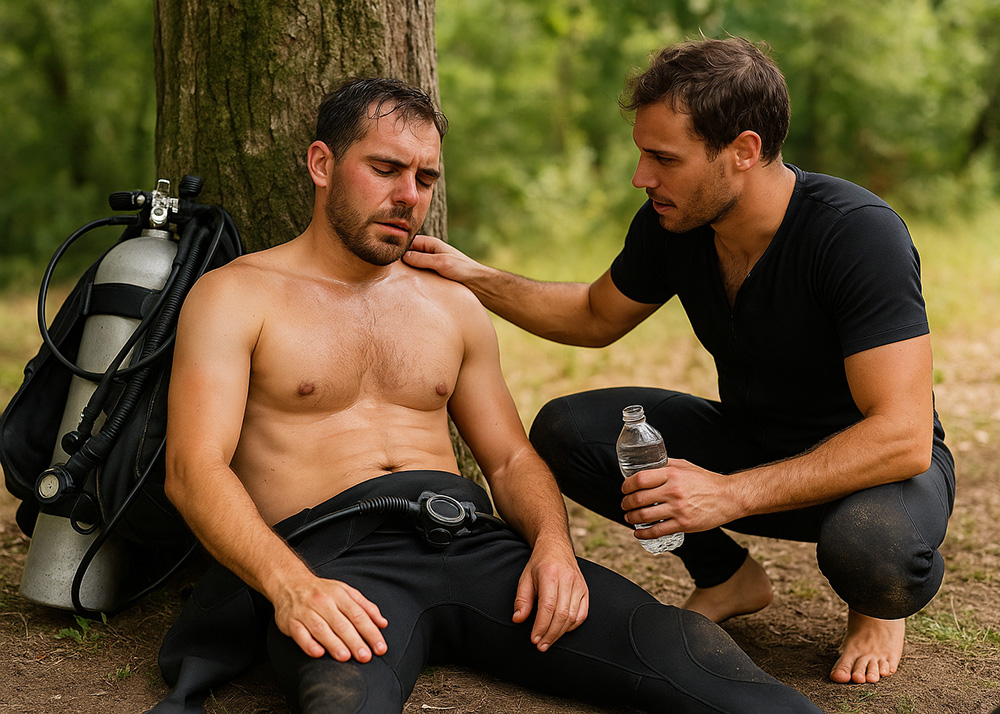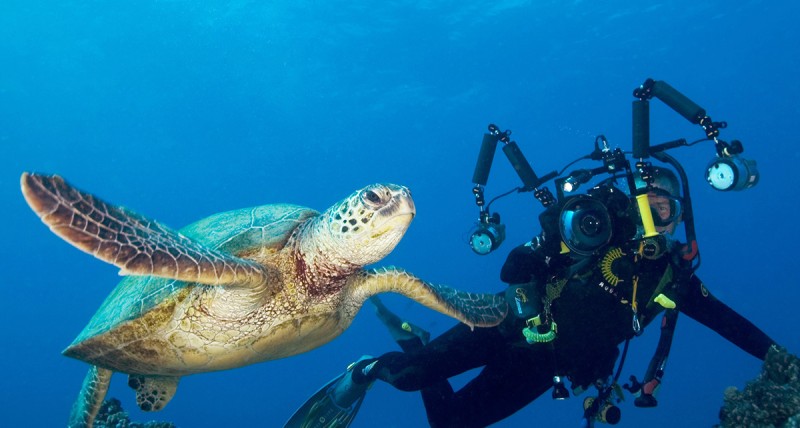While scuba diving often brings to mind the risks of cold water exposure, heat-related illnesses are a serious but often overlooked concern—especially during surface intervals, dive prep, or training sessions in hot climates. Wearing thick exposure suits, carrying heavy gear, and spending extended time in direct sun can put divers at risk for hyperthermia—a dangerous rise in core body temperature.
This plan outlines how to recognize the signs of heat exhaustion and heatstroke, and how to respond effectively. Whether you’re on a boat, by the pool, or at a remote dive site, knowing how to act quickly and calmly could save a life.
1. Recognize the Signs and Symptoms
Hyperthermia ranges from mild heat exhaustion to life-threatening heatstroke. Early recognition is critical.
Heat Exhaustion (early stage):
Heavy sweating
Fatigue or weakness
Headache or dizziness
Pale, clammy skin
Nausea or vomiting
Muscle cramps
Rapid pulse
Heatstroke (severe/emergency):
Altered mental state or confusion
Hot, dry skin (sweating may stop)
Flushed or red skin
Rapid, shallow breathing
Strong, rapid pulse
Loss of consciousness or seizures
Body temperature >104°F (40°C)
2. Remove the Diver from the Heat Source
Immediately move the diver to a shaded, cool, and ventilated area.
Remove the diver from their wetsuit or drysuit to promote cooling.
Loosen or remove any tight clothing or gear that may trap heat.
3. Activate Emergency Medical Services (EMS)
Call 911 or the local emergency number.
Communicate:
Suspected heat-related illness
Diver’s condition (conscious, breathing, responsive?)
Onset time and symptoms
Location and access instructions
4. Begin Cooling Procedures
✅ If the diver is conscious and alert:
Encourage them to sit or lie down in a cool place.
Hydrate with cool water or electrolyte drinks (not ice-cold).
Apply cool, wet cloths or towels to skin (especially armpits, neck, groin).
Use fans or breeze to enhance evaporative cooling.
If possible, sponge or mist the body with water.
⚠️ If the diver is semi-conscious or unconscious:
Treat as heatstroke – a medical emergency.
Begin aggressive cooling:
Wrap in cool, wet sheets or towels
Apply cold packs to armpits, neck, and groin
Fan vigorously to promote evaporation
Do not force fluids orally.
Monitor airway, breathing, and circulation continuously.
5. Monitor Vital Signs
Check level of consciousness, pulse, and respiration.
Be prepared to initiate rescue breathing or CPR if the diver becomes unresponsive.
Document:
Vital signs
Time of symptoms onset
Fluids administered
Cooling methods used
6. Transport to Medical Facility
Continue cooling during transport.
Provide EMS with all observations and actions taken.
Monitor for delayed onset symptoms after apparent recovery.
✅ Additional Prevention and Safety Tips
Avoid prolonged exposure to direct sunlight while in full exposure gear.
Encourage hydration before and between dives.
Schedule dives during cooler parts of the day when possible.
Educate divers about the importance of recognizing heat illness early.
Create shaded areas and offer cool drinks during surface intervals on dive boats or land-based operations.



